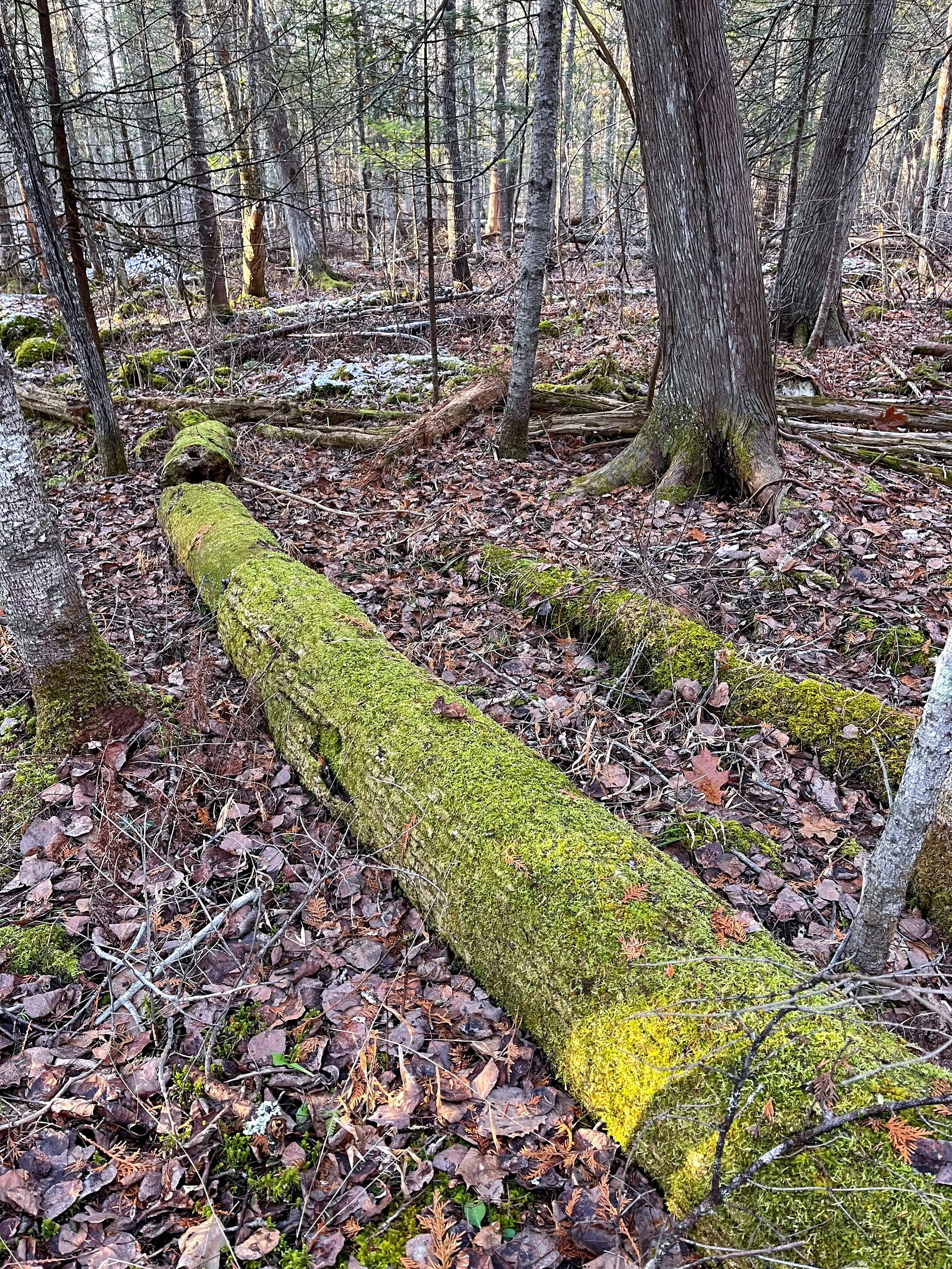By Joe Dembeck
For those that know me, the title statement is not reflective of my indoor spaces. I like my workshop organized and clean. But when it comes to my woodlands, I am polar opposite!
The one statement I hear from woodland owners that truly upsets me more than any other is, “I am cleaning up the woods.”
Standing dead oaks at Yankee Woodlot Demonstration Forest provide shelter and forage for myriad species, including porcupines, raccoons, pileated woodpeckers, and gray squirrels.
Clean up your trails, your woods roads, and definitely your garage, but in your woodlands, let the fallen branches and trees, standing snags, and unwanted debris from timber harvesting or firewood cutting remain where they are. This woody debris is no longer living, but it is far from “dead”. Through decay, nutrients are being released back into the soil (think of this as fertilizer for your woodland). Bacteria and fungi are breaking down the woody debris, and other organisms are feeding on these bacteria and fungi. And, just as importantly, all that downed and standing dead woody debris provides all sorts of habitats!
Woodland habitat comes in all forms: young regrowth; natural woody debris on the forest floor (think blowdowns); standing/leaning dead trees; and human activity (brush piles).
A brush pile in a forest opening in the author’s home woodlot.
When thinking about the habitat needs of various wildlife species, take some time to research the needs of the species you are more concerned about. You can find such information through online searches, stopping by your local Soil & Water Conservation District Office, or contacting Maine Inland Fisheries & Wildlife (IFW) regional wildlife staff. Much too often, we forget to think about the varying year round habitat needs of the smaller organisms, such as insects, reptiles, amphibians, and small mammals, which are the foundation for the success of the larger species we often focus on.
So, the next time you come across a storm fallen tree or large branch in your woods, think twice about the need to “clean it up”. Instead, let it be.
Joe Dembeck is the former executive director at Somerset County SWCD, current chapter leader for the Upper Kennebec Valley Chapter of Maine Woodland Owners and a woodlands owner in Somerset County.



